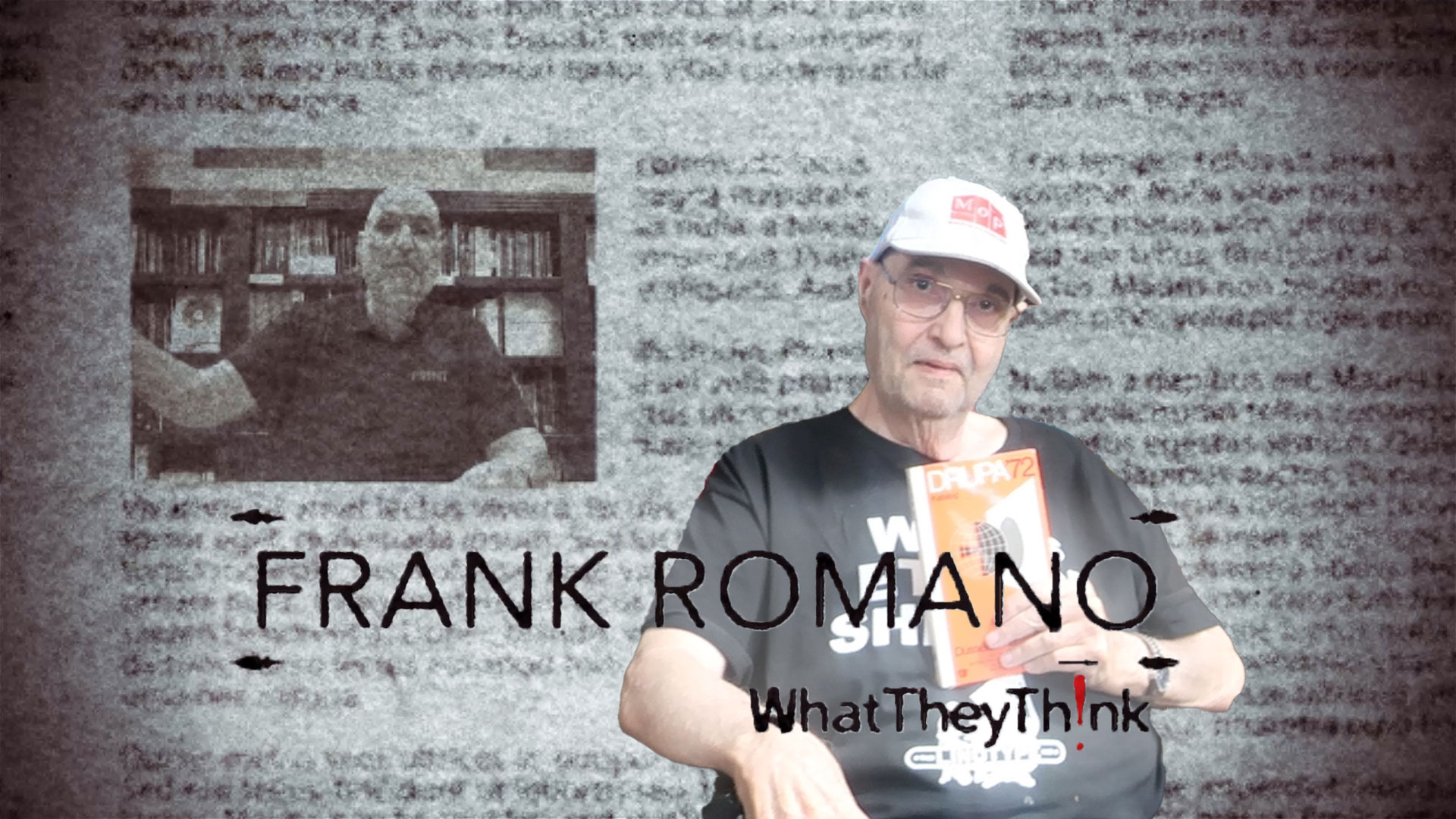60 Years of Stahlfolder Production in Ludwigsburg
Press release from the issuing company
The Ludwigsburg site of Heidelberger Druckmaschinen AG (Heidelberg) is celebrating the 60th anniversary of its folding machines. In 1949, Kurt Stahl and Adolf I. Döpfert founded the company Stahl & Co. Maschinenfabrik Ludwigsburg. Shortly afterwards, engineer Kurt Stahl constructed and presented his first folding machine, while businessman Adolf I. Döpfert built up the sales side of the company. During the nascent years of the company, sales operations were limited to Germany, before then undergoing expansion through the worldwide sales and service network of Heidelberg. Today, the Stahlfolder name is synonymous with folding machines. Customers from all corners of the globe will have the chance to find out why in the course of the "Stahlfolder Demo Weeks" to be held at the Information Center in Ludwigsburg between the end of April and mid-May 2009.
Folding machines - a global success story
Operations moved to the current site in Ludwigsburg in 1960 and the 10,000th folding machine was assembled there as early as 1968. The 20,000th machine was delivered twelve years later in 1980. The designers worked to ensure that the productivity, user-friendliness and quality of the machines underwent a process of ongoing development. The highly successful models of the 1960s included the "Stahl Variabel" machines with working widths of 58, 72, 86, and 100 centimeters, and the combination folding machines with working widths of 58, 72, and 86 centimeters. The Stahl-O-Mat generation was introduced in time for drupa 1977. 1984 then saw the advent of the KC "Compact", the first combination folding machine with an electronic folding knife.
The first fully-automatic buckle plate folding machine was unveiled for drupa 1986. At drupa 1995, the new buckle plate and combination folding machines in the TD and KD series raised the bar further still. A completely new generation of folding machines was launched at drupa 2004 in the shape of the Stahlfolder TH/KH. The machines scored highly at the Red Dot Design Awards and received a PIA/GATF InterTech Award. To date, more than 3,500 machines have been delivered worldwide. The Stahlfolder KH 82 with automated cross-fold unit proved one of the highlights of drupa 2008. It cuts makeready times in the cross-fold unit by 80 percent and is the first machine to achieve a speed of 230 meters per minute even in cross folding jobs.
Constant expansion of product portfolio and market position
In order to expand its global market leadership in the field of folding machines, Stahl acquired folding machine manufacturer Baumfolder in Sidney, Ohio (U.S.) in January 1991. This move established a production site in the U.S. and opened up the key American and Canadian markets. In the same year, Stahl also took over another U.S. company, saddlestitcher manufacturer Macey. 1994 brought the successful acquisition of McCain-Brehmer Buchbindereimaschinen GmbH in Leipzig. Brehmer manufactured folding machines, saddlestitchers, thread-stitching and thread-sealing machines. Today, Leipzig is the competence center for saddlestitchers and adhesive binders. In January 1999, Heidelberg acquired the Stahl Group along with the sites in Ludwigsburg, Leipzig and Sidney/Ohio. Stahl lived on in the product names and the Stahlfolder made its debut at drupa 2000. Since 2006, Heidelberg has been producing the KHC 78 and KHC 66 folding machines for the Chinese market at the Qingpu plant near Shanghai.
Postpress an integral part of the Heidelberg solution strategy
Particularly in these current times, postpress offers customers potential for optimization and value creation, and an opportunity to make themselves stand out from the competition. "Postpress is an integral part of our product portfolio and its share of sales is growing," says Stephan Plenz, Member of the Heidelberg Management Board responsible for Technology and Operations. "We are the only manufacturer to offer our customers complete solutions, from prepress to press and postpress. We have the most extensive product portfolio in the field of sheetfed offset, and it is carefully geared toward generating customer benefits," continues Plenz. The postpress range includes systems and machines for folding, collating, binding and stitching magazines, brochures and books.
Introduced for the first time at drupa 2008, Prinect Postpress Manager is able to integrate all processes, reflecting the trend toward shorter throughput times and runs. "Using innovative solutions that are simple to operate and technologically superior, we aim to make sure commercial and industrial printers and bookbinders are ready to face what the future may hold," explains Thomas Krischke, Head of Postpress Commercial. That includes the state-of-the-art Systemservice featuring the most comprehensive service network in the industry, and the training program offered by the Print Media Academy. Services such as Business Consulting provide support to print shops and postpress specialists, helping them identify additional potential in terms of productivity and savings. Expansion in the consumables sector is intended to compensate the cyclical nature of the machine business in the future. Over 1,000 sales personnel and around 4,500 technicians in 170 countries and 250 branches ensure all aspects of postpress are also represented worldwide.
The Postpress Commercial sector has production operations at various sites. Folding machines (Stahlfolder), mailing systems and delivery systems are manufactured in Ludwigsburg, while saddlestitchers (Stitchmaster), adhesive binders (Eurobind) and thread-sealing machines are produced in Leipzig. In Sidney, Ohio, Baumfolder manufactures folding machines for the American market, and Qingpu near Shanghai is the source of folding machines for the Chinese market.
60 Years of Stahlfolder - Milestones at a Glance
- 1949 Kurt Stahl and Adolf I. Döpfert found Stahl & Co. Maschinenfabrik Ludwigsburg.
- 1950 Kurt Stahl builds the first folding machine himself, while Adolf I. Döpfert expands the company’s sales activities. During the nascent years of the company, sales operations are limited to Germany, before then expanding through the worldwide sales and service network of Heidelberg.
- 1954 The folding machine range is presented at drupa.
- 1960 The company moves to the current site at Ludwigsburg-Neckarweihingen. The models that enjoy major success are the "Stahl Variabel" machines with working widths of 58, 72, 86, and 100 centimeters, and the combination folding machines with working widths of 58, 72, and 86 centimeters.
- 1968 10,000th folding machine is delivered.
- 1978 Customer information center opens in Ludwigsburg.
- 1980 20,000th folding machine is delivered.
- 1984 For the first time, the KC "Compact" combination folding machine is presented with an electronic folding knife. To this day, it remains the most successful combination folding machine.
- 1986 The first fully-automatic buckle plate folder CFC 66 featuring 25 servomotors is introduced at drupa. With the Computer Instruction Center CIS, it was possible to create and evaluate the folding programs on a PC. This was used to preset the folding machines.
- 1988 The TC "Top Cat" buckle plate folding machine series achieves folding speeds of 200 meters per minute for the first time.
- 1991 Stahl takes over U.S. companies Macey and the Baumfolder Corporation. Baumfolder manufactures folding machines for the American market. Macey produces saddlestitchers.
- 1994 Stahl acquires McCain-Brehmer Buchbindereimaschinen GmbH in Leipzig. Saddlestitcher production is clustered here, and the new FS 100 thread-sealing machine is developed.
- 1995 The TD/KD series featuring the DCT 2000 control system developed in-house is presented at drupa.
- 1999 Heidelberg acquires the Stahl Group along with the sites in Ludwigsburg, Leipzig, and Sidney, Ohio.
- 2000 Folding machines bearing the Stahlfolder name are introduced for the first time at drupa.
- 2004 Market launch of the new generation of folding machines, Stahlfolder TH/KH. These receive the Red Dot Design Award and the PIA/GATF InterTech Award. To date, more than 3,500 machines have been delivered.
- 2006 Production of the KHC 78 and KHC 66 folding machines starts in the Qingpu plant near Shanghai.
- 2008 The Stahlfolder KH 82 with automated cross-fold unit is unveiled at drupa. This is the first machine to achieve a speed of 230 meters per minute even in cross-folding jobs, and cuts makeready times in the cross-fold unit by 80 percent.
Folding machines - a global success story
Operations moved to the current site in Ludwigsburg in 1960 and the 10,000th folding machine was assembled there as early as 1968. The 20,000th machine was delivered twelve years later in 1980. The designers worked to ensure that the productivity, user-friendliness and quality of the machines underwent a process of ongoing development. The highly successful models of the 1960s included the "Stahl Variabel" machines with working widths of 58, 72, 86, and 100 centimeters, and the combination folding machines with working widths of 58, 72, and 86 centimeters. The Stahl-O-Mat generation was introduced in time for drupa 1977. 1984 then saw the advent of the KC "Compact", the first combination folding machine with an electronic folding knife.
The first fully-automatic buckle plate folding machine was unveiled for drupa 1986. At drupa 1995, the new buckle plate and combination folding machines in the TD and KD series raised the bar further still. A completely new generation of folding machines was launched at drupa 2004 in the shape of the Stahlfolder TH/KH. The machines scored highly at the Red Dot Design Awards and received a PIA/GATF InterTech Award. To date, more than 3,500 machines have been delivered worldwide. The Stahlfolder KH 82 with automated cross-fold unit proved one of the highlights of drupa 2008. It cuts makeready times in the cross-fold unit by 80 percent and is the first machine to achieve a speed of 230 meters per minute even in cross folding jobs.
Constant expansion of product portfolio and market position
In order to expand its global market leadership in the field of folding machines, Stahl acquired folding machine manufacturer Baumfolder in Sidney, Ohio (U.S.) in January 1991. This move established a production site in the U.S. and opened up the key American and Canadian markets. In the same year, Stahl also took over another U.S. company, saddlestitcher manufacturer Macey. 1994 brought the successful acquisition of McCain-Brehmer Buchbindereimaschinen GmbH in Leipzig. Brehmer manufactured folding machines, saddlestitchers, thread-stitching and thread-sealing machines. Today, Leipzig is the competence center for saddlestitchers and adhesive binders. In January 1999, Heidelberg acquired the Stahl Group along with the sites in Ludwigsburg, Leipzig and Sidney/Ohio. Stahl lived on in the product names and the Stahlfolder made its debut at drupa 2000. Since 2006, Heidelberg has been producing the KHC 78 and KHC 66 folding machines for the Chinese market at the Qingpu plant near Shanghai.
Postpress an integral part of the Heidelberg solution strategy
Particularly in these current times, postpress offers customers potential for optimization and value creation, and an opportunity to make themselves stand out from the competition. "Postpress is an integral part of our product portfolio and its share of sales is growing," says Stephan Plenz, Member of the Heidelberg Management Board responsible for Technology and Operations. "We are the only manufacturer to offer our customers complete solutions, from prepress to press and postpress. We have the most extensive product portfolio in the field of sheetfed offset, and it is carefully geared toward generating customer benefits," continues Plenz. The postpress range includes systems and machines for folding, collating, binding and stitching magazines, brochures and books.
Introduced for the first time at drupa 2008, Prinect Postpress Manager is able to integrate all processes, reflecting the trend toward shorter throughput times and runs. "Using innovative solutions that are simple to operate and technologically superior, we aim to make sure commercial and industrial printers and bookbinders are ready to face what the future may hold," explains Thomas Krischke, Head of Postpress Commercial. That includes the state-of-the-art Systemservice featuring the most comprehensive service network in the industry, and the training program offered by the Print Media Academy. Services such as Business Consulting provide support to print shops and postpress specialists, helping them identify additional potential in terms of productivity and savings. Expansion in the consumables sector is intended to compensate the cyclical nature of the machine business in the future. Over 1,000 sales personnel and around 4,500 technicians in 170 countries and 250 branches ensure all aspects of postpress are also represented worldwide.
The Postpress Commercial sector has production operations at various sites. Folding machines (Stahlfolder), mailing systems and delivery systems are manufactured in Ludwigsburg, while saddlestitchers (Stitchmaster), adhesive binders (Eurobind) and thread-sealing machines are produced in Leipzig. In Sidney, Ohio, Baumfolder manufactures folding machines for the American market, and Qingpu near Shanghai is the source of folding machines for the Chinese market.
60 Years of Stahlfolder - Milestones at a Glance
- 1949 Kurt Stahl and Adolf I. Döpfert found Stahl & Co. Maschinenfabrik Ludwigsburg.
- 1950 Kurt Stahl builds the first folding machine himself, while Adolf I. Döpfert expands the company’s sales activities. During the nascent years of the company, sales operations are limited to Germany, before then expanding through the worldwide sales and service network of Heidelberg.
- 1954 The folding machine range is presented at drupa.
- 1960 The company moves to the current site at Ludwigsburg-Neckarweihingen. The models that enjoy major success are the "Stahl Variabel" machines with working widths of 58, 72, 86, and 100 centimeters, and the combination folding machines with working widths of 58, 72, and 86 centimeters.
- 1968 10,000th folding machine is delivered.
- 1978 Customer information center opens in Ludwigsburg.
- 1980 20,000th folding machine is delivered.
- 1984 For the first time, the KC "Compact" combination folding machine is presented with an electronic folding knife. To this day, it remains the most successful combination folding machine.
- 1986 The first fully-automatic buckle plate folder CFC 66 featuring 25 servomotors is introduced at drupa. With the Computer Instruction Center CIS, it was possible to create and evaluate the folding programs on a PC. This was used to preset the folding machines.
- 1988 The TC "Top Cat" buckle plate folding machine series achieves folding speeds of 200 meters per minute for the first time.
- 1991 Stahl takes over U.S. companies Macey and the Baumfolder Corporation. Baumfolder manufactures folding machines for the American market. Macey produces saddlestitchers.
- 1994 Stahl acquires McCain-Brehmer Buchbindereimaschinen GmbH in Leipzig. Saddlestitcher production is clustered here, and the new FS 100 thread-sealing machine is developed.
- 1995 The TD/KD series featuring the DCT 2000 control system developed in-house is presented at drupa.
- 1999 Heidelberg acquires the Stahl Group along with the sites in Ludwigsburg, Leipzig, and Sidney, Ohio.
- 2000 Folding machines bearing the Stahlfolder name are introduced for the first time at drupa.
- 2004 Market launch of the new generation of folding machines, Stahlfolder TH/KH. These receive the Red Dot Design Award and the PIA/GATF InterTech Award. To date, more than 3,500 machines have been delivered.
- 2006 Production of the KHC 78 and KHC 66 folding machines starts in the Qingpu plant near Shanghai.
- 2008 The Stahlfolder KH 82 with automated cross-fold unit is unveiled at drupa. This is the first machine to achieve a speed of 230 meters per minute even in cross-folding jobs, and cuts makeready times in the cross-fold unit by 80 percent.
Video Center
- KYOCERA NIXKA INKJET SYSTEMS (KNIS) INTRODUCES BELHARRA, THE NEW WAVE OF PHOTO PRINTERS
- New RISO Printing Unit Offers Easy Integration for Package Printing
- March 2024 Inkjet Installation Roundup
- Inkjet Integrator Profiles: Integrity Industrial Inkjet
- Revisiting the Samba printhead
- 2024 Inkjet Shopping Guide for Folding Carton Presses
- The Future of AI In Packaging
- Inkjet Integrator Profiles: DJM

WhatTheyThink is the official show daily media partner of drupa 2024. More info about drupa programs
© 2024 WhatTheyThink. All Rights Reserved.








